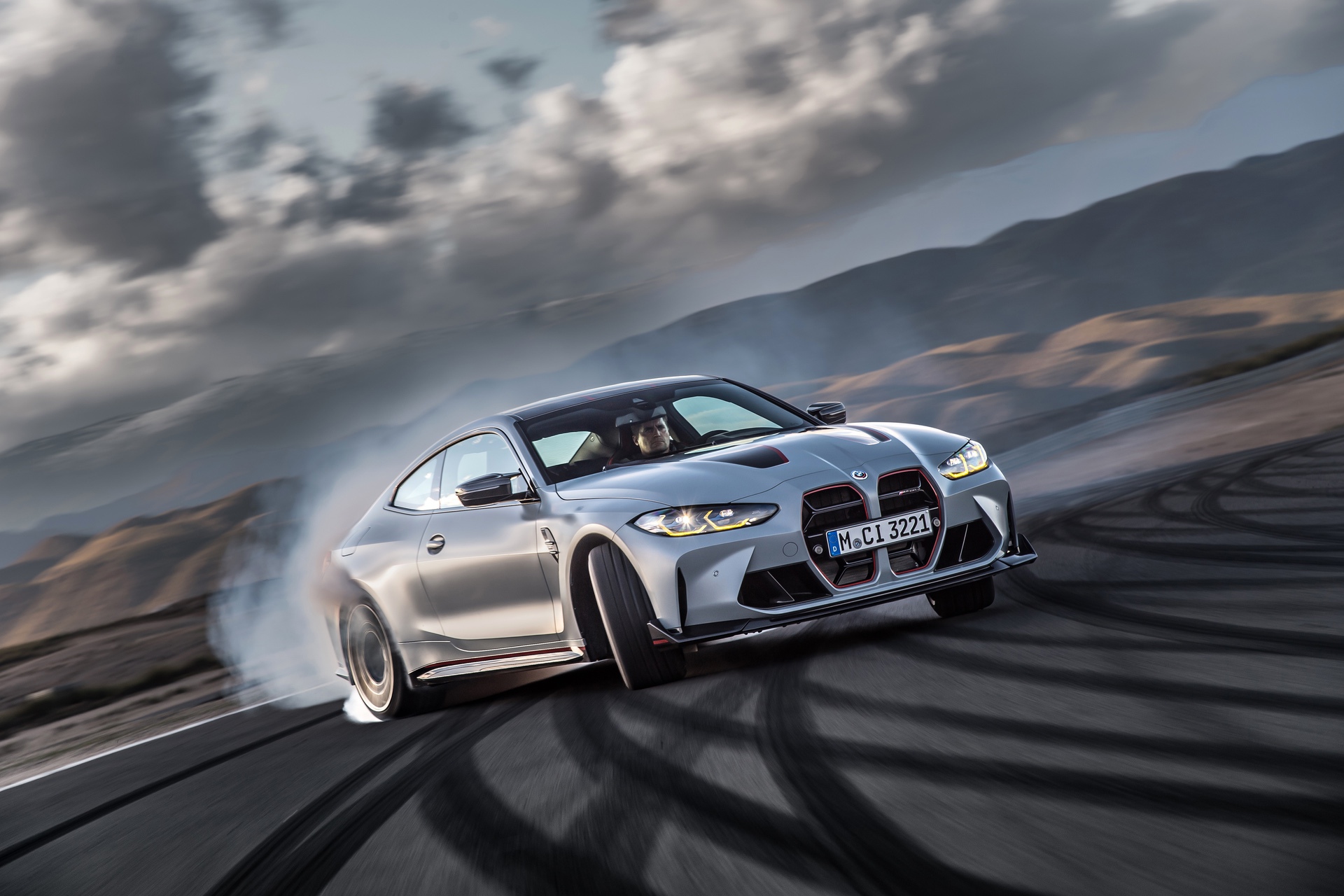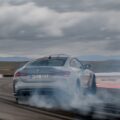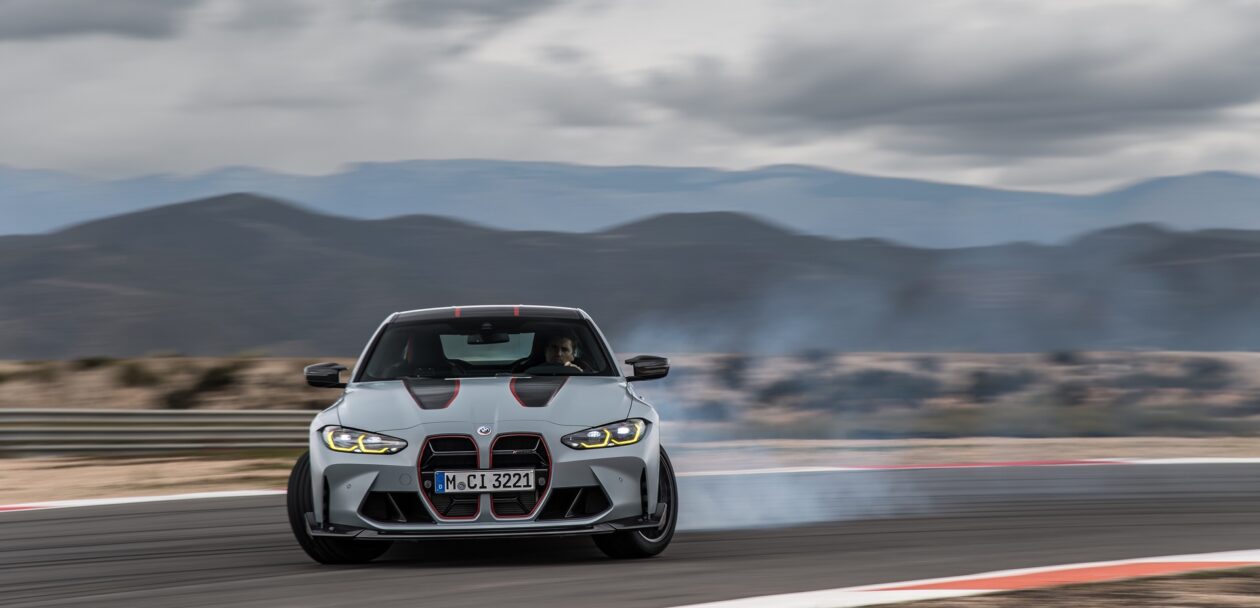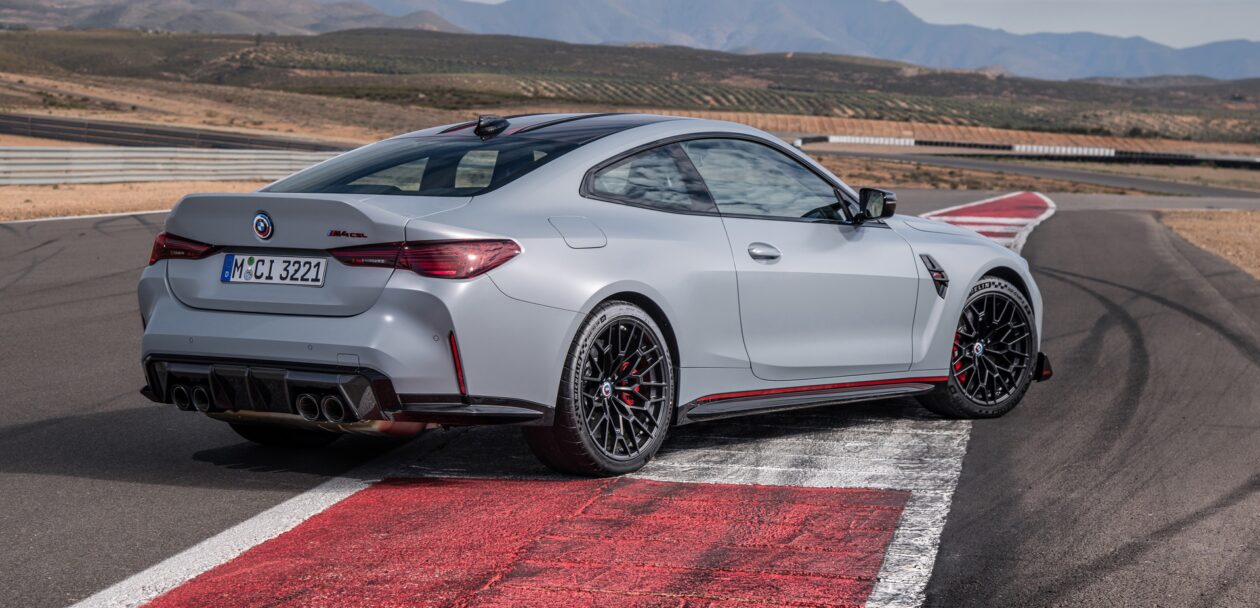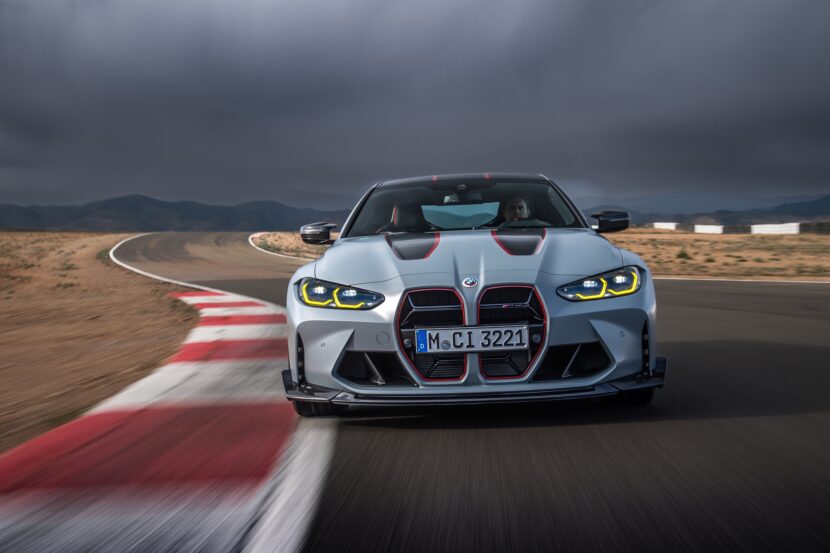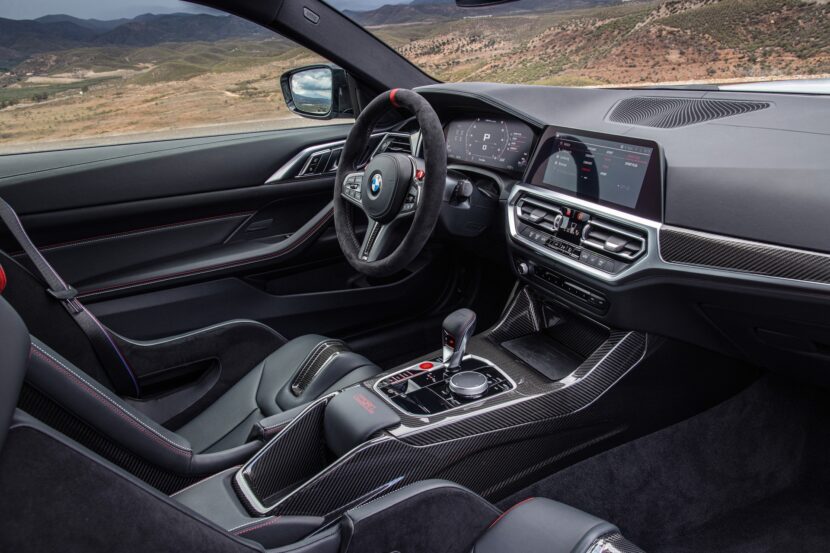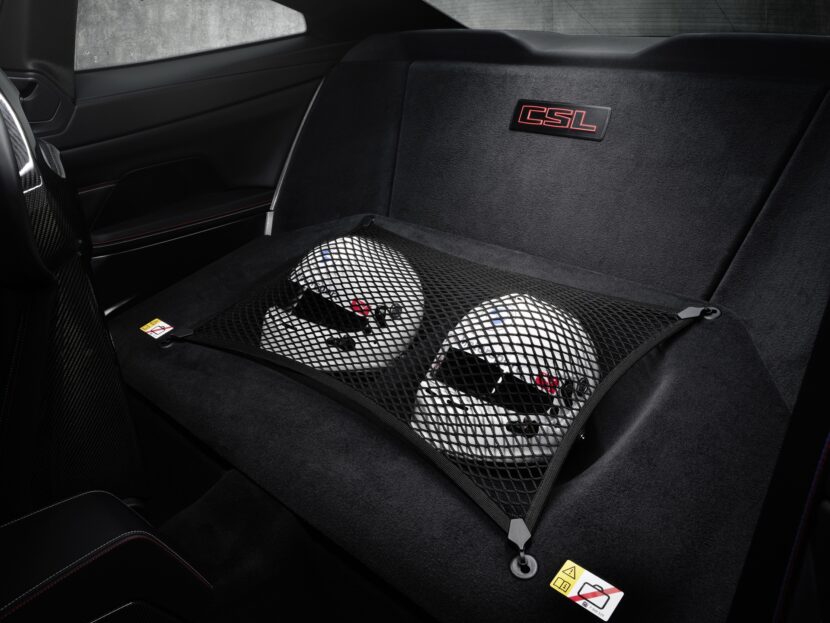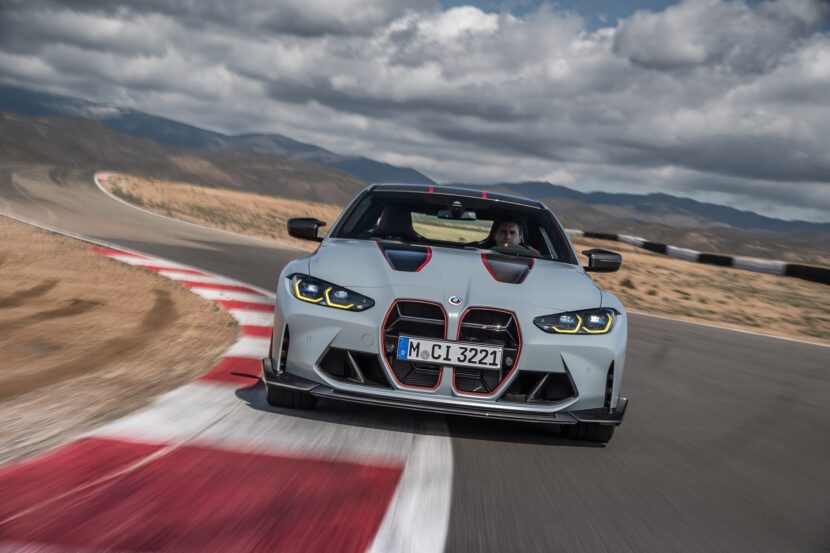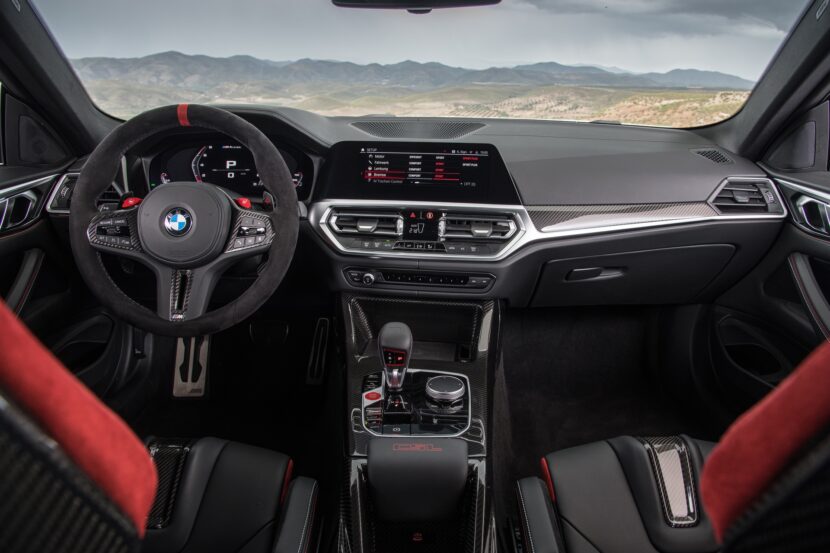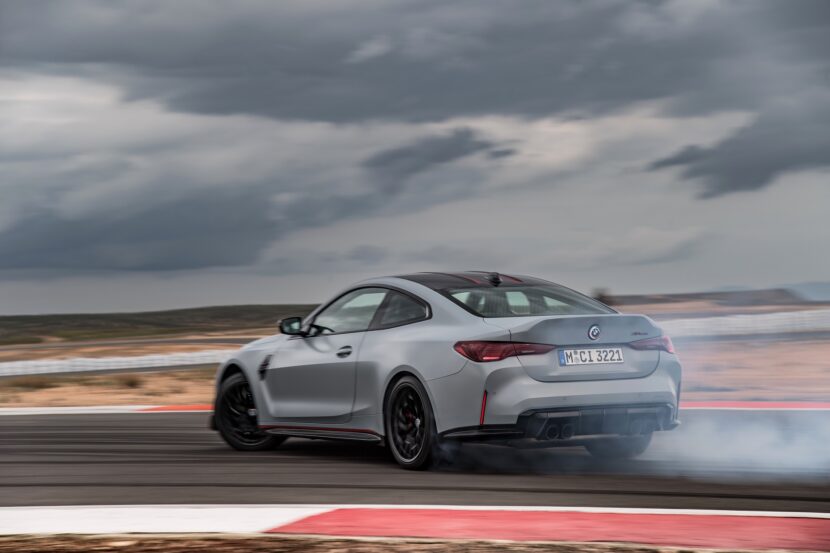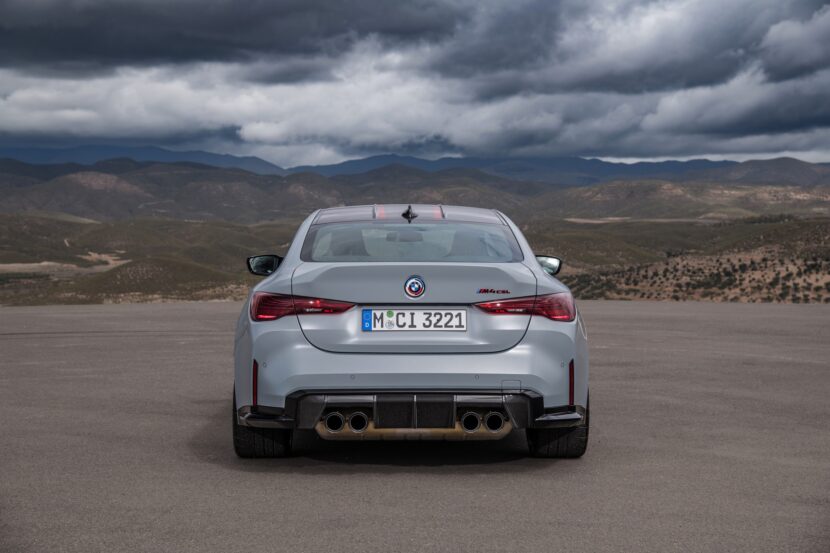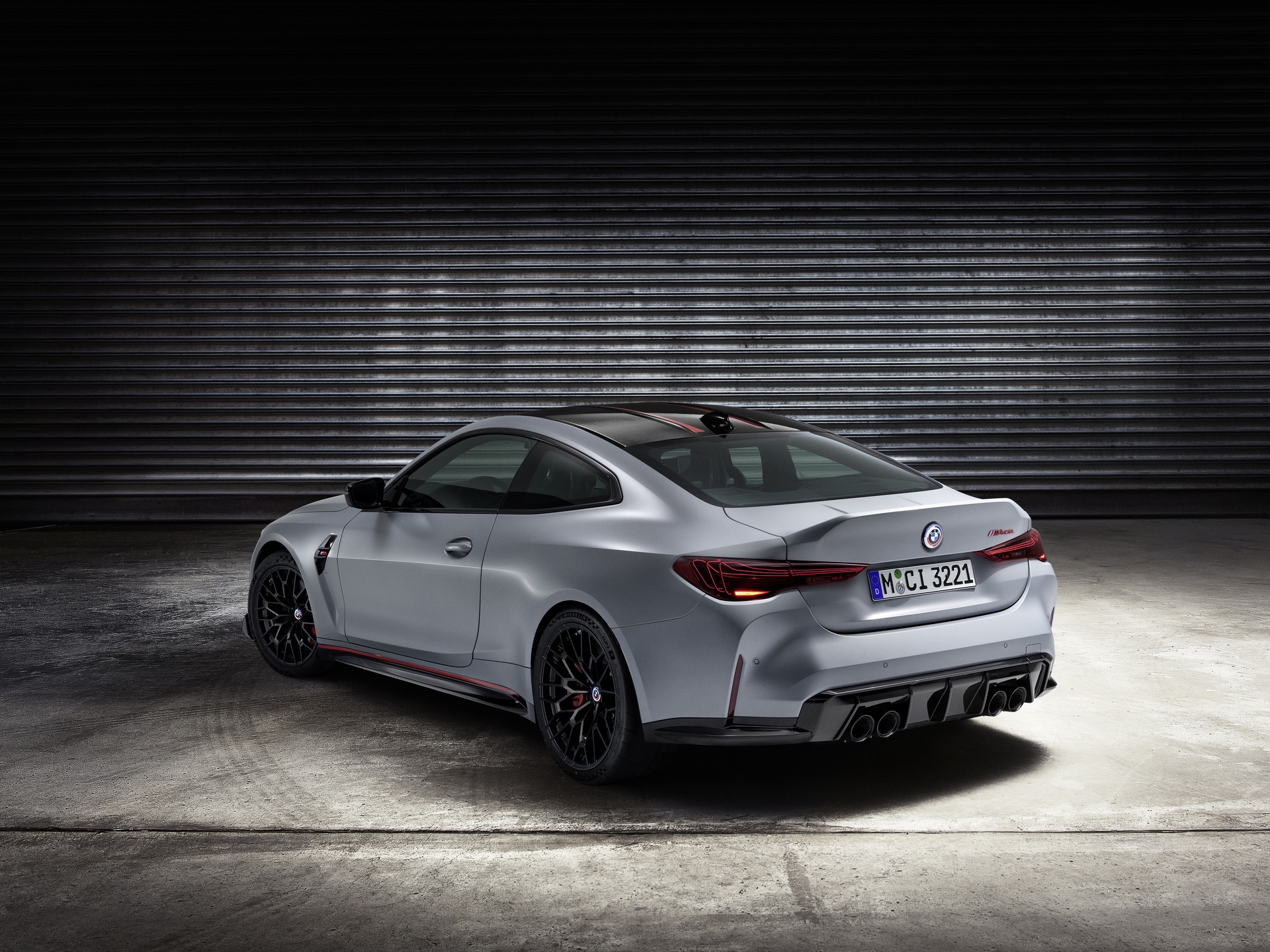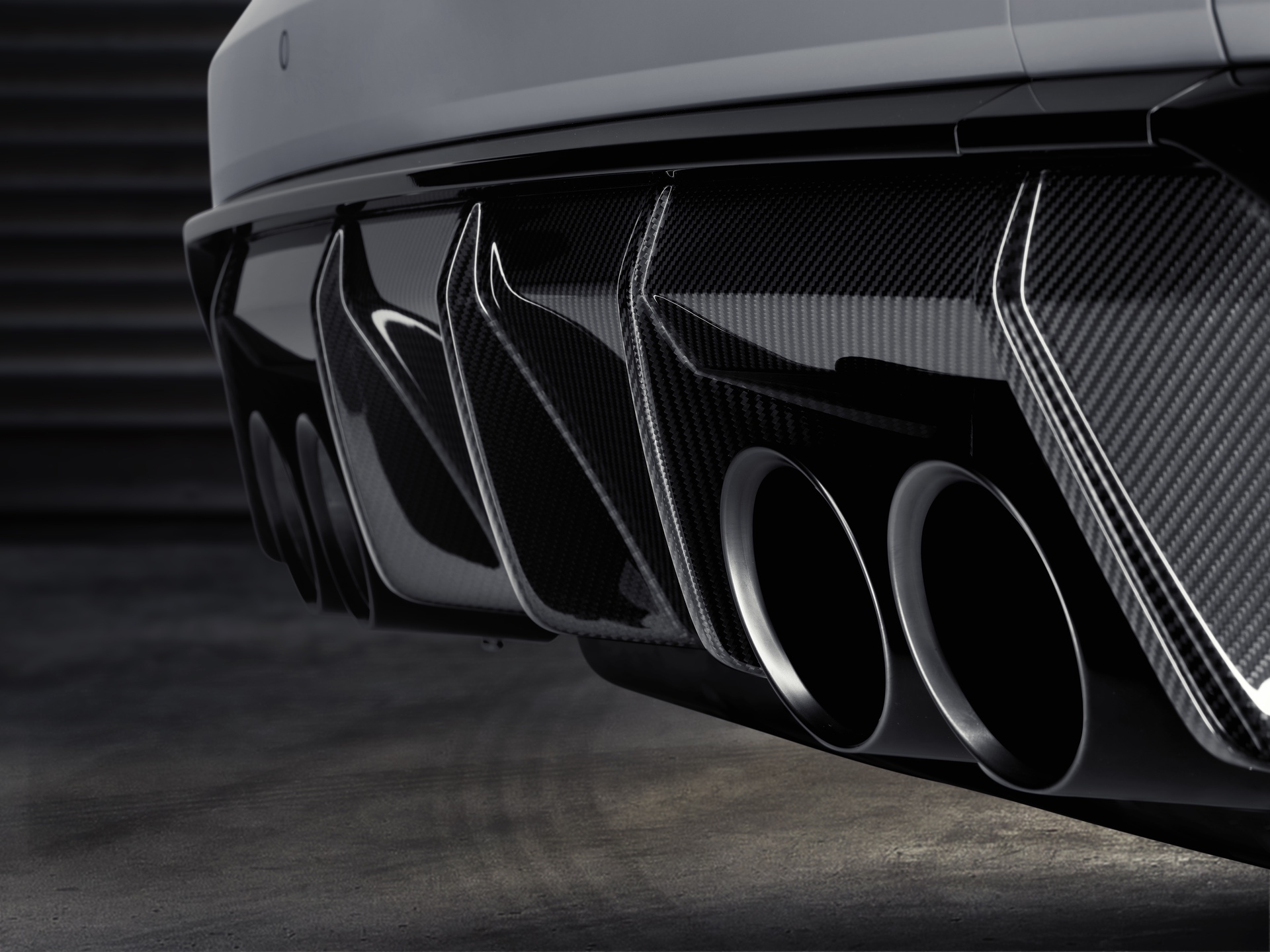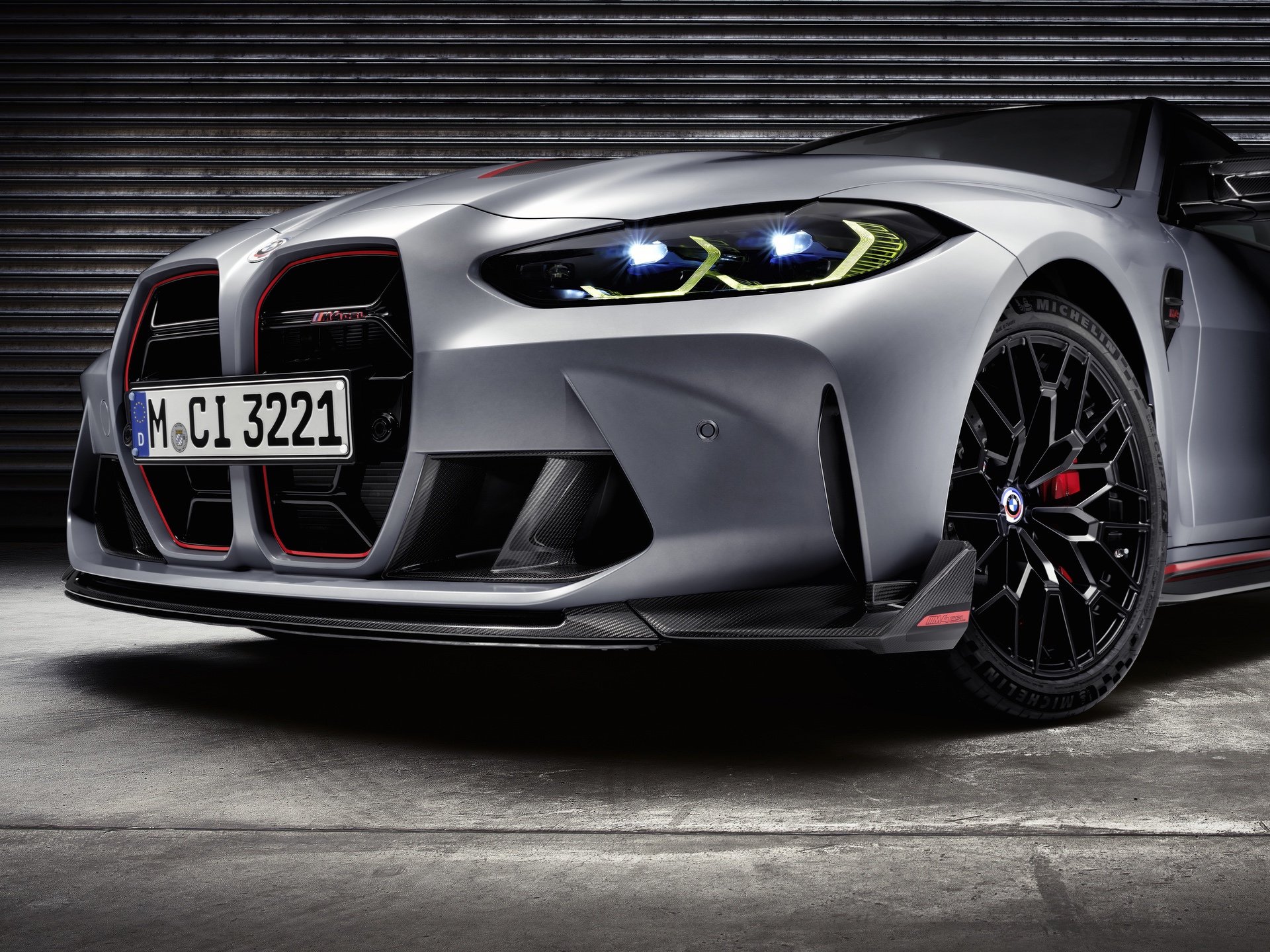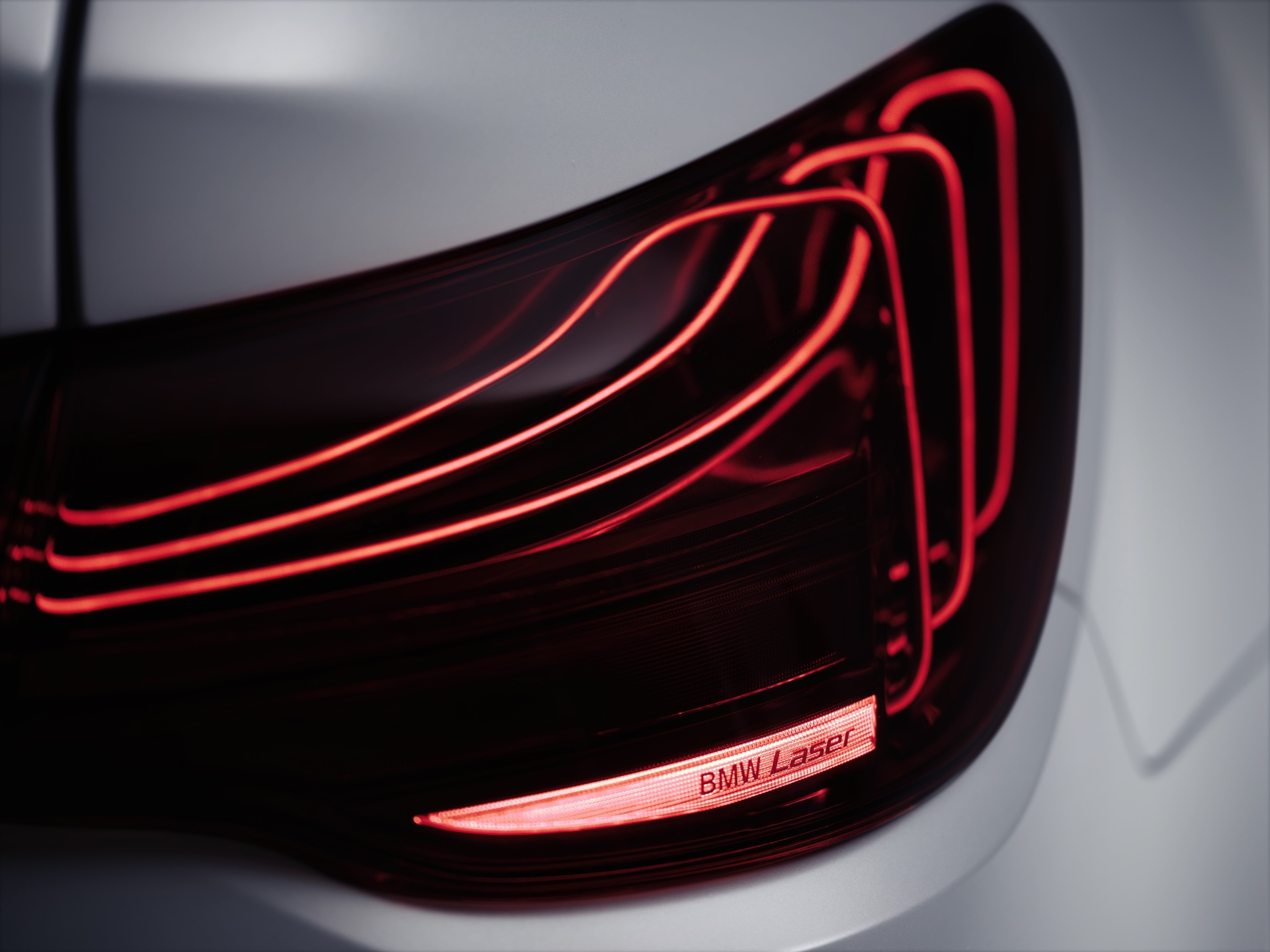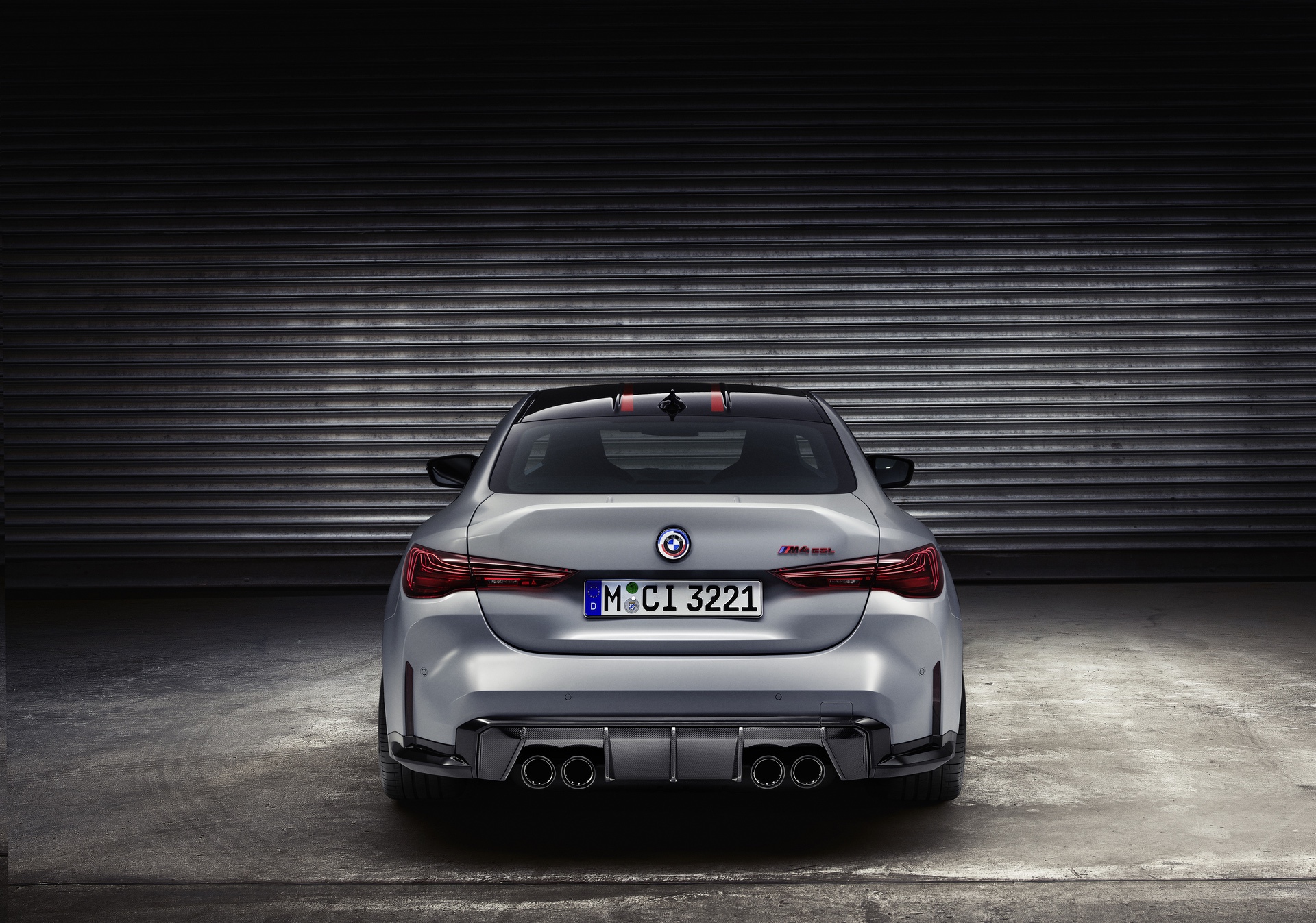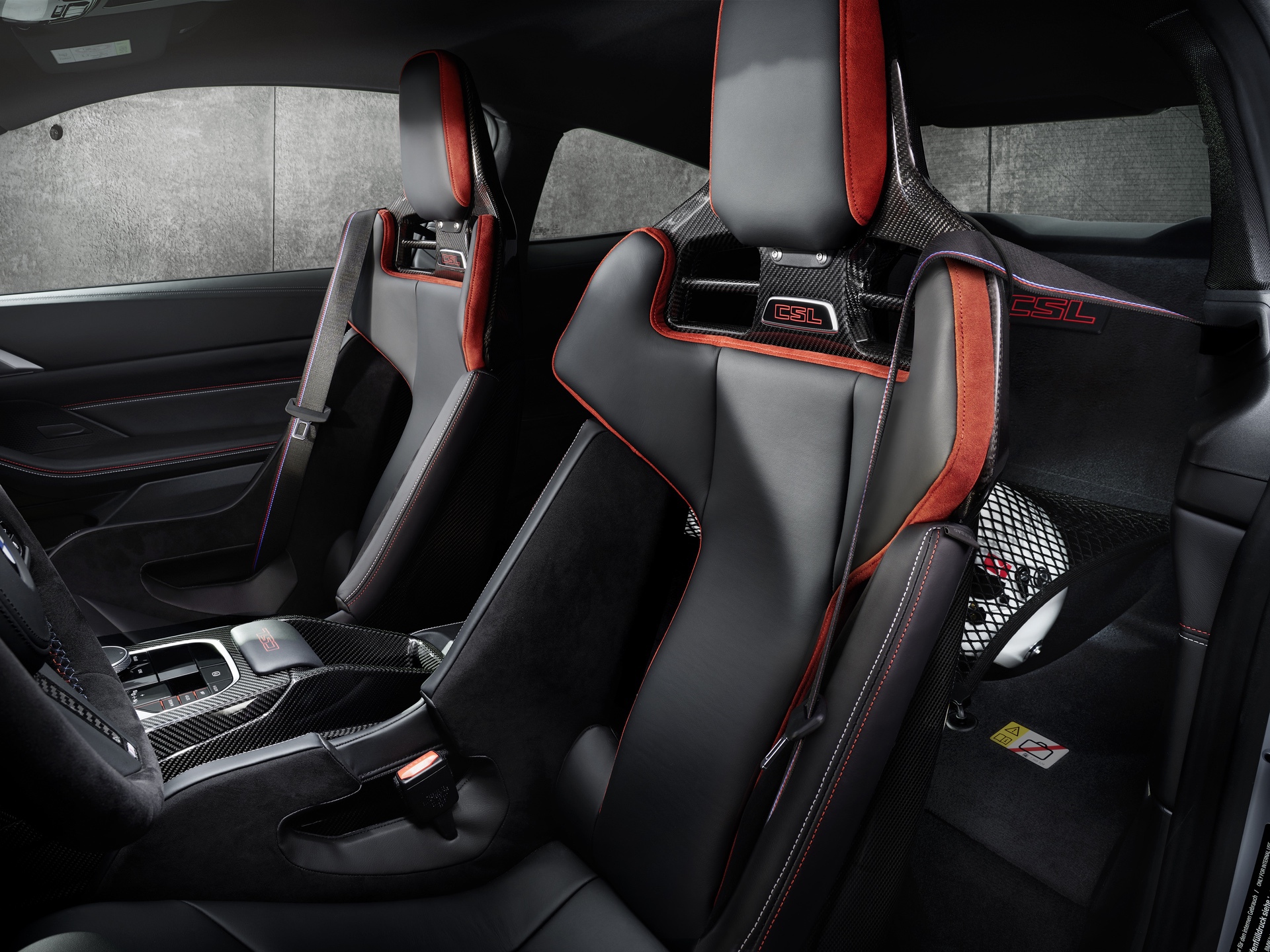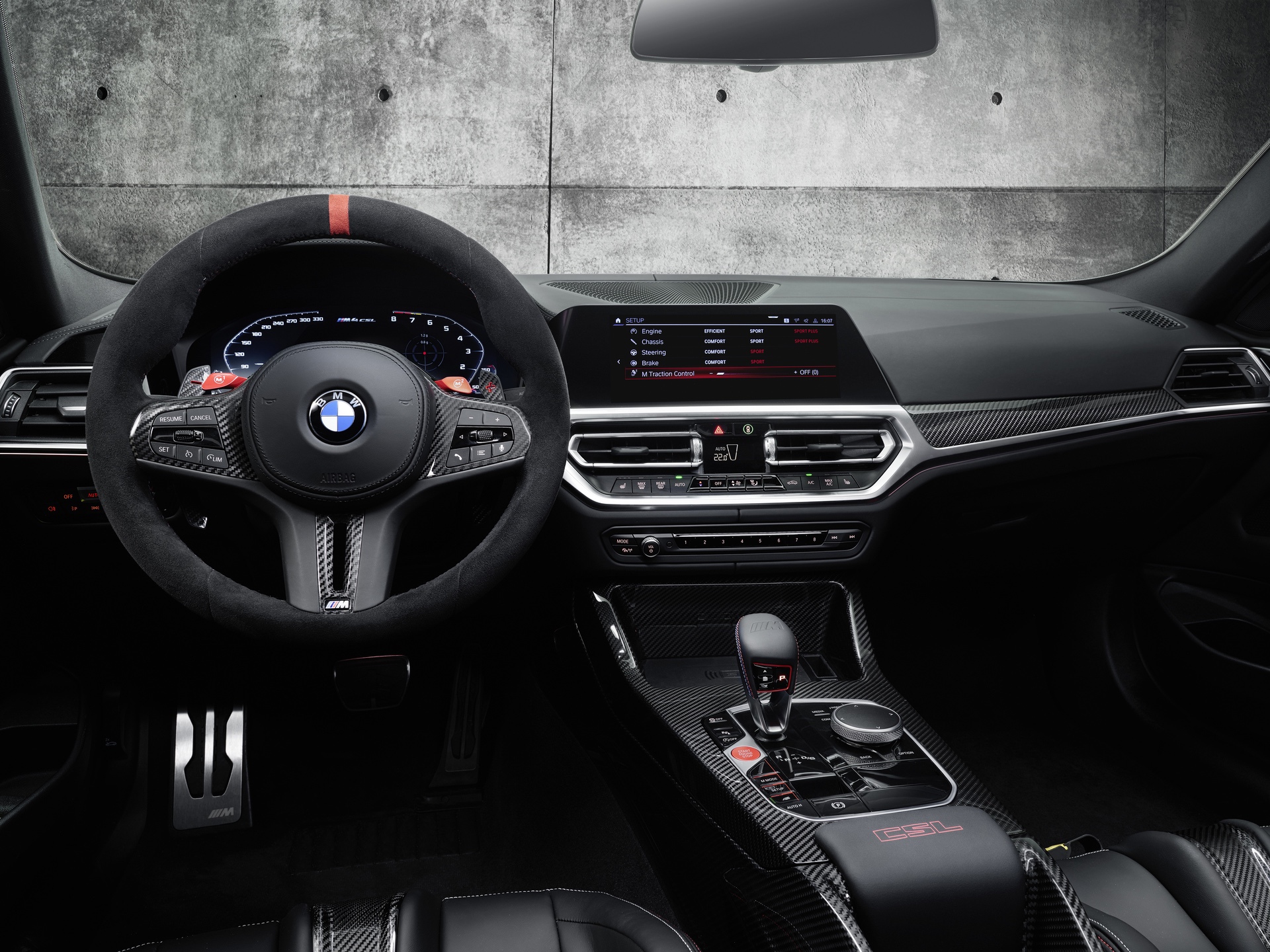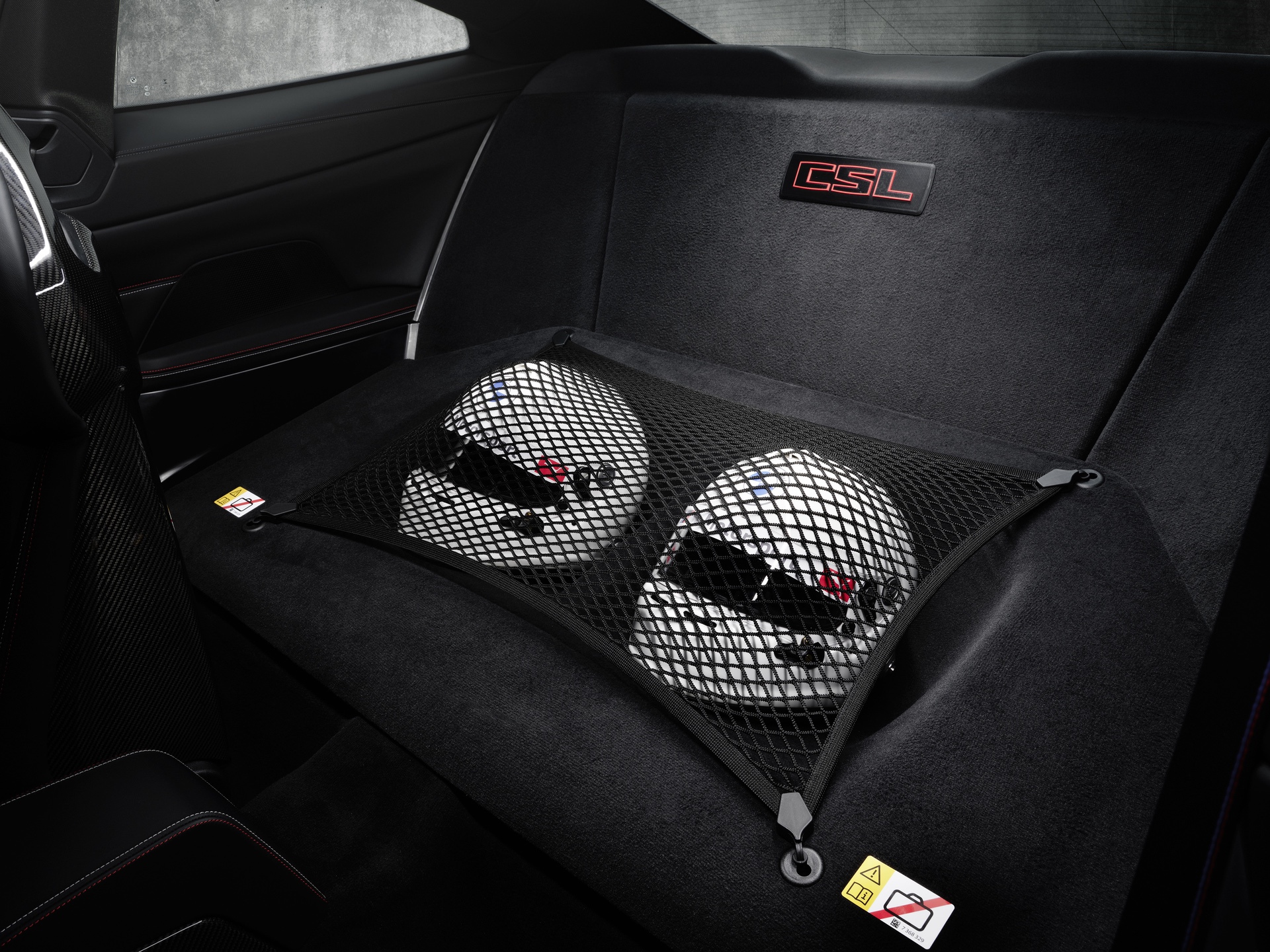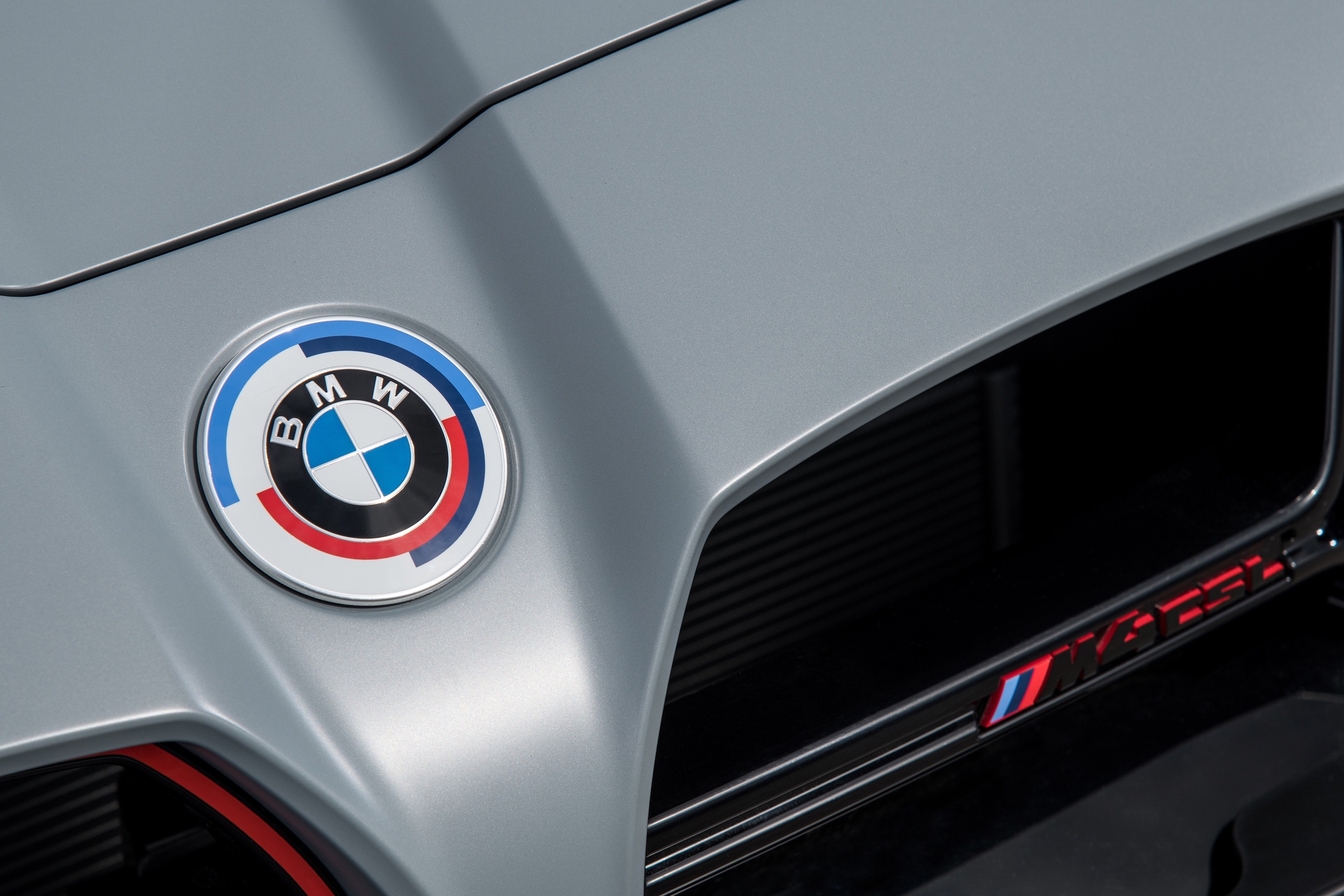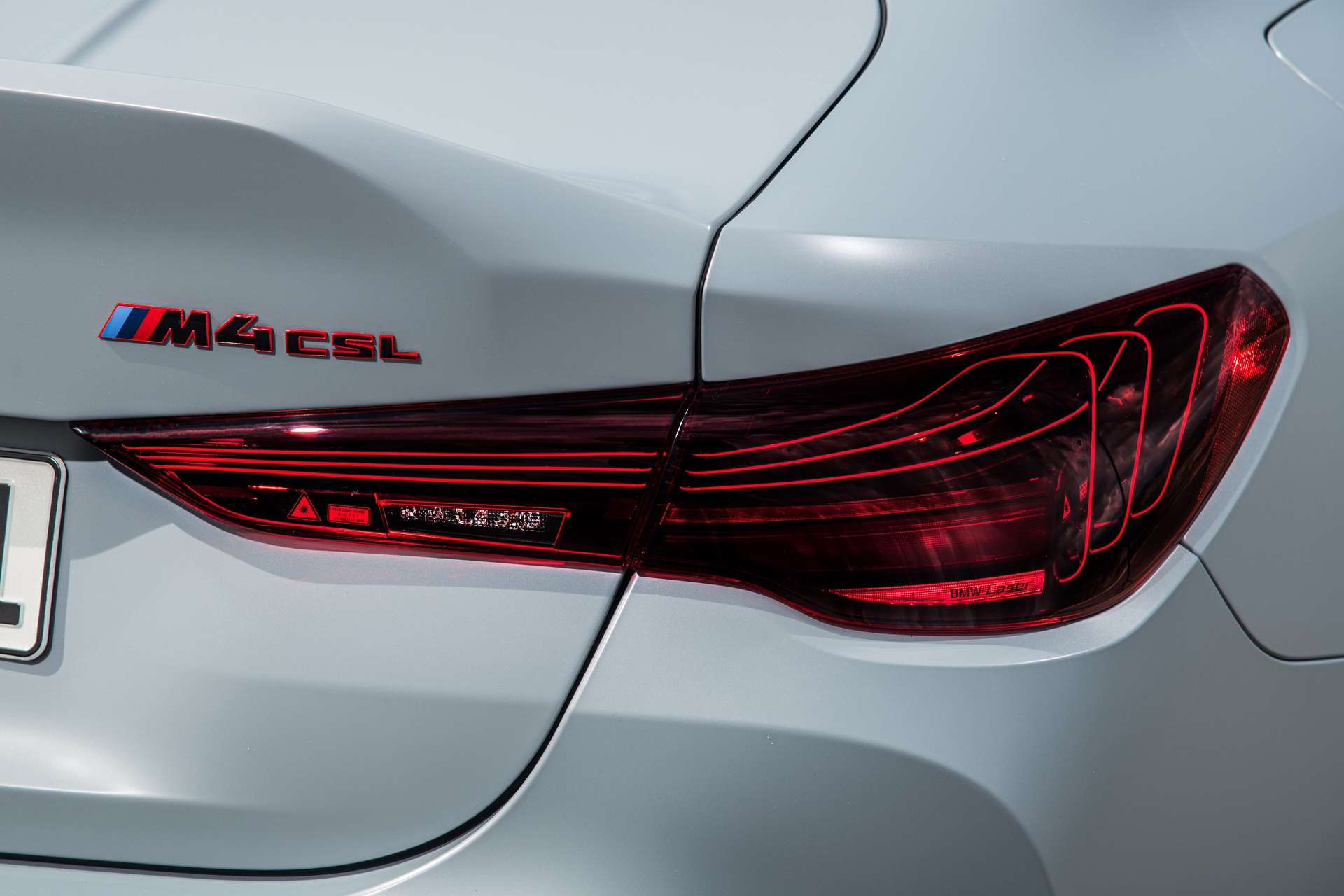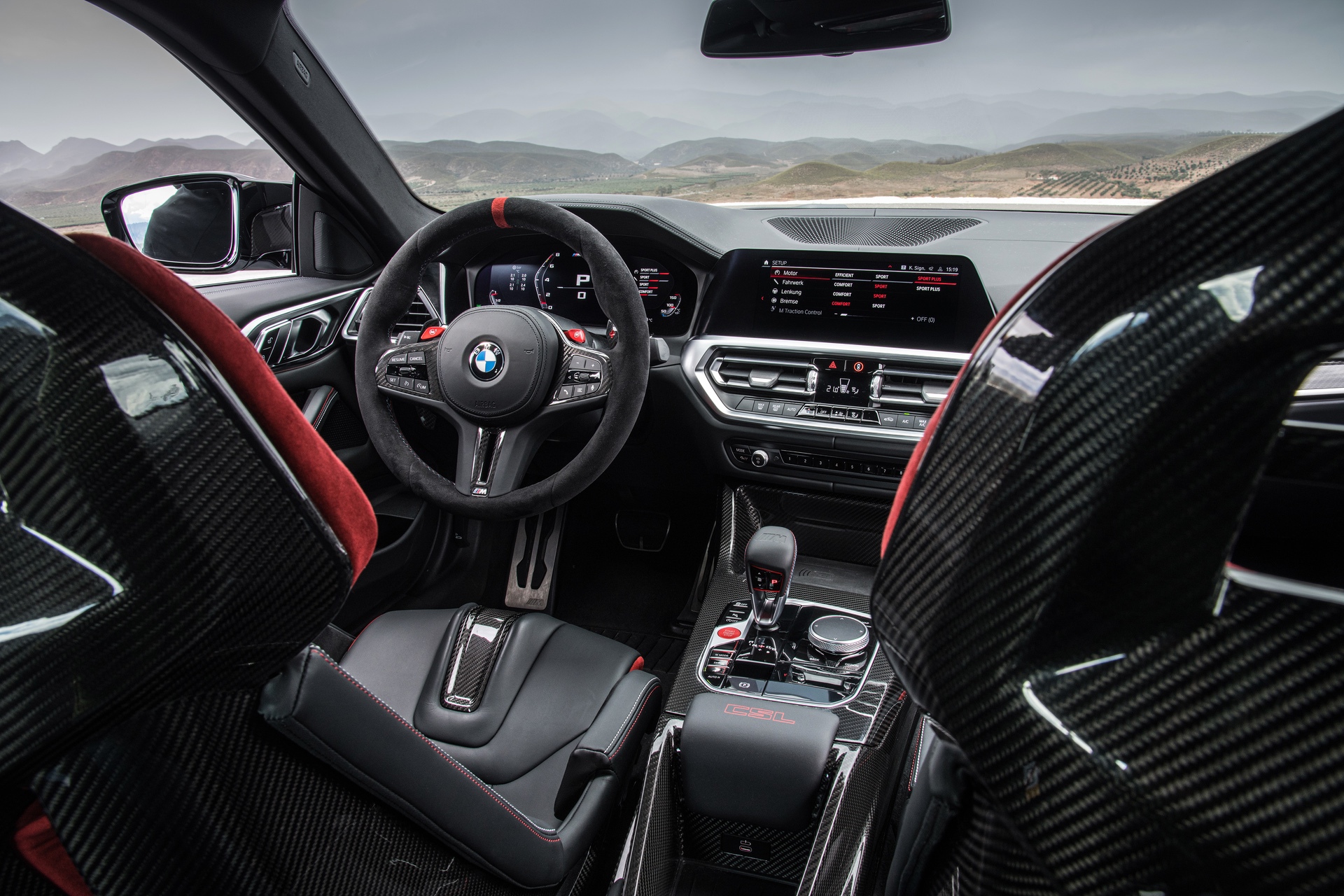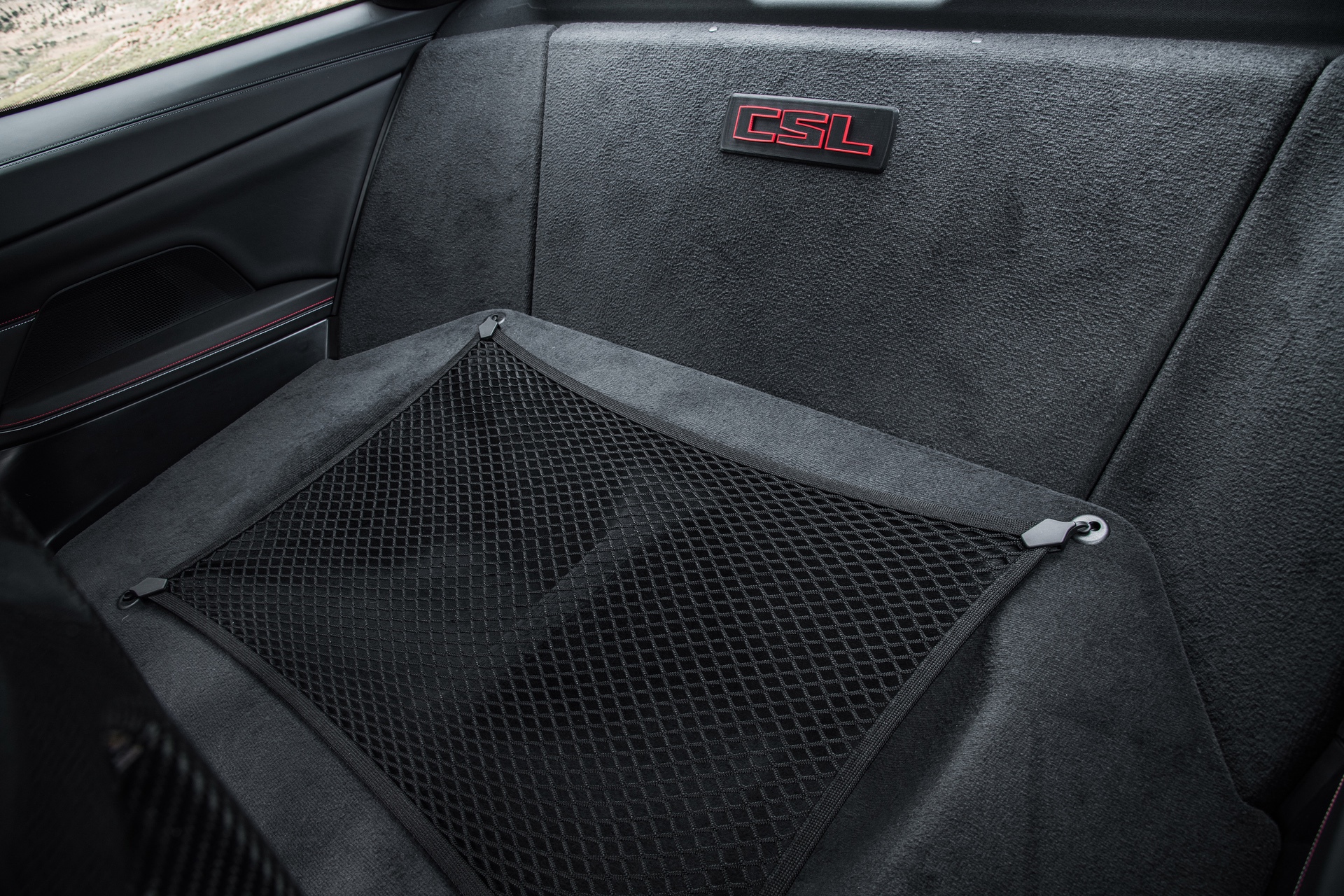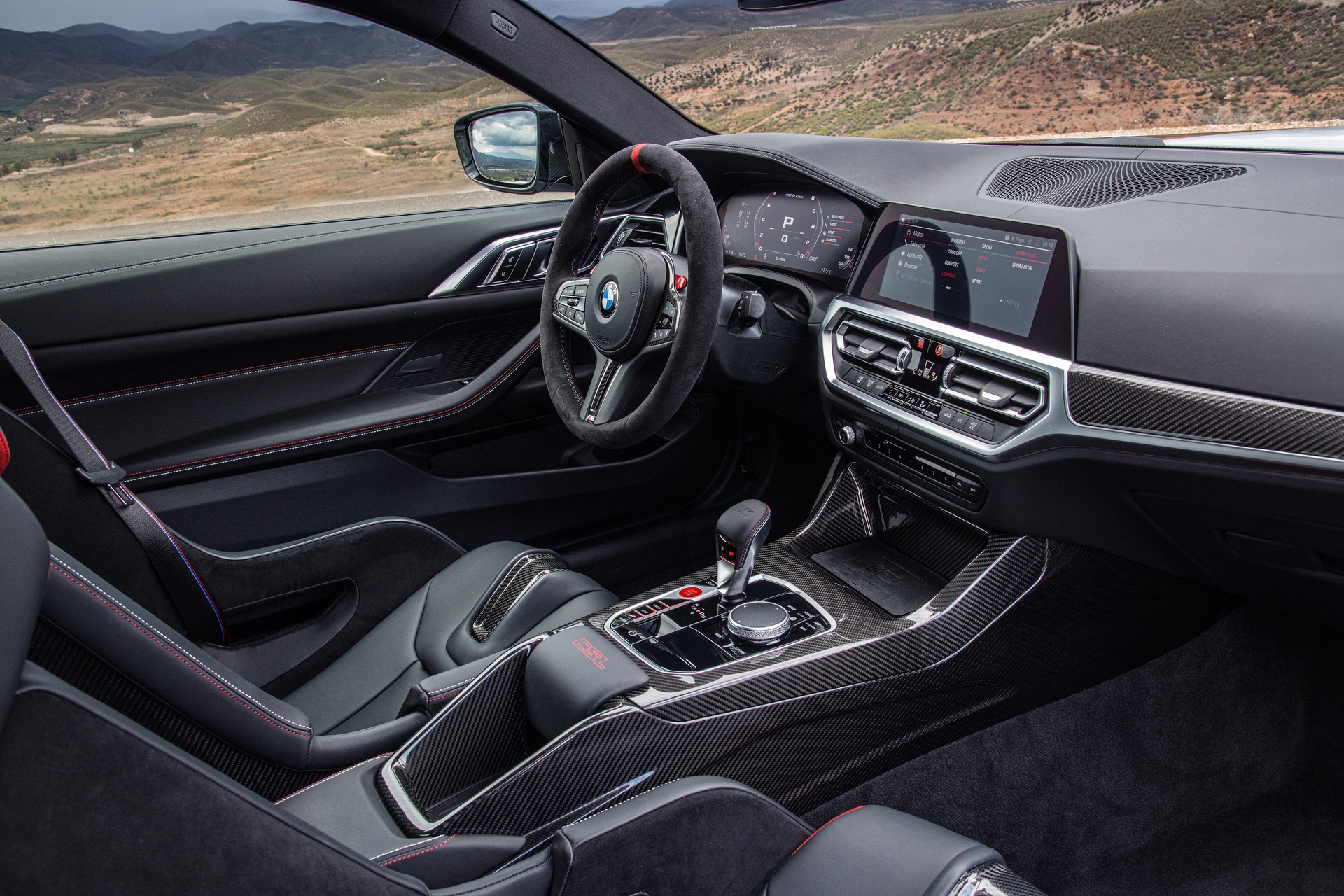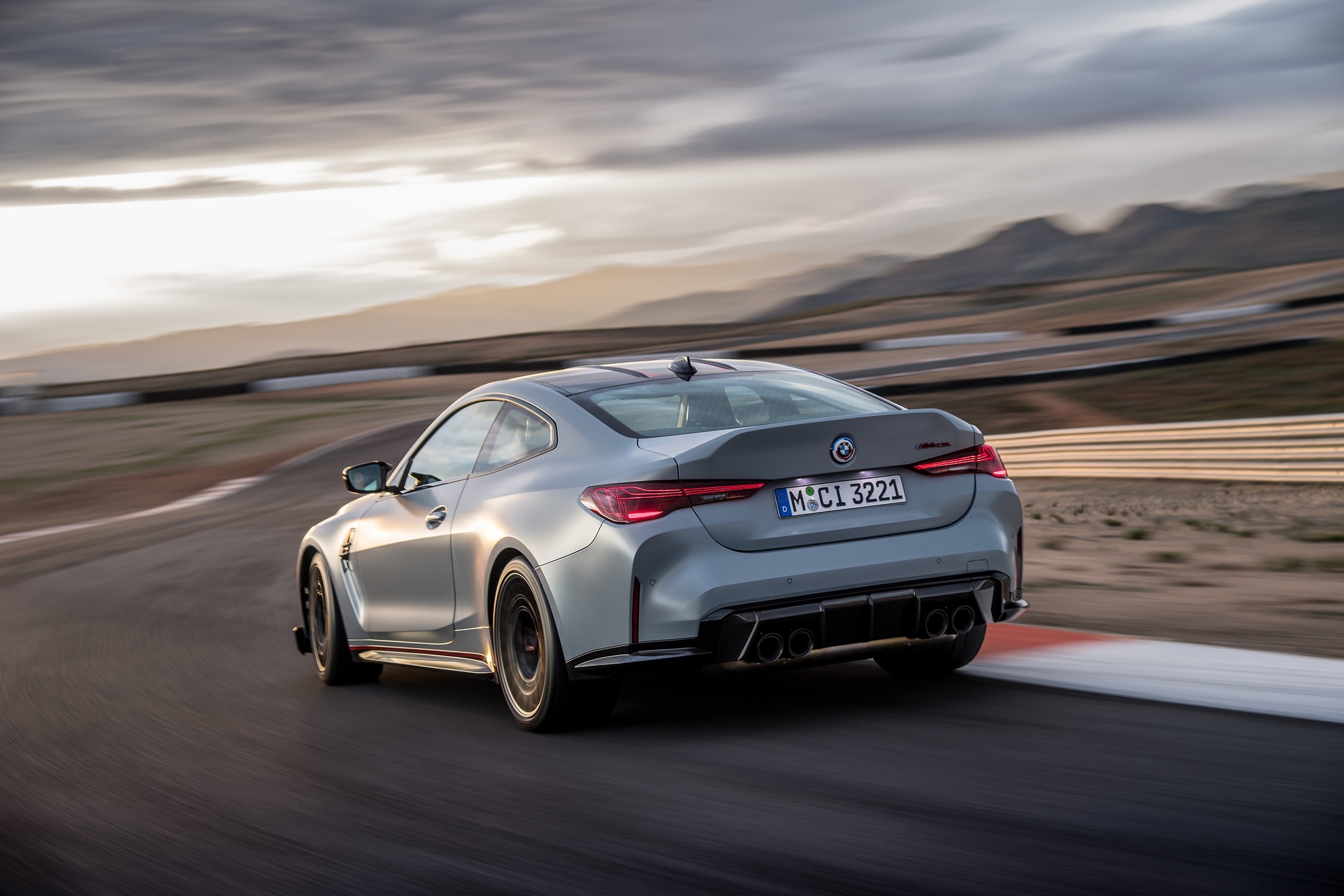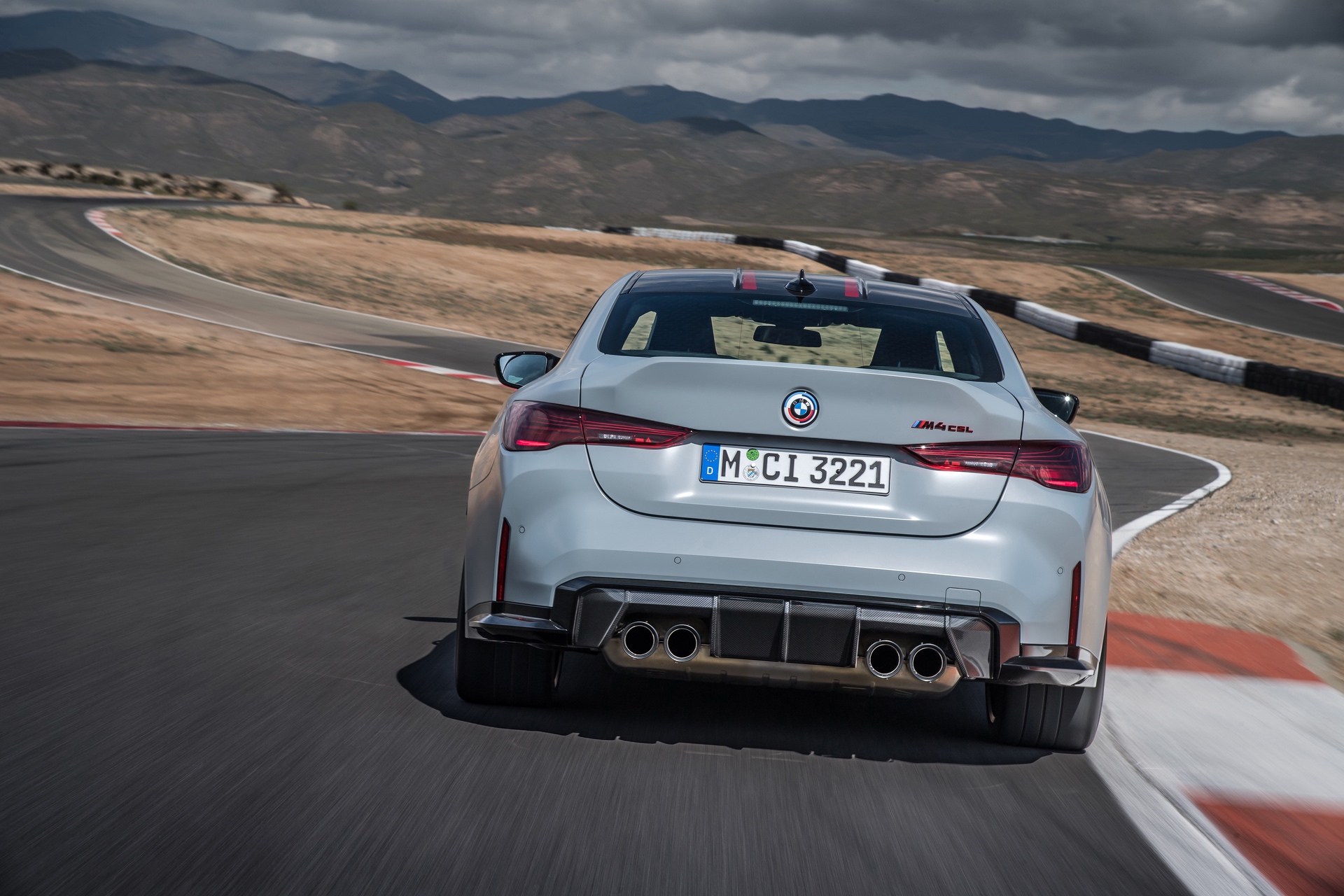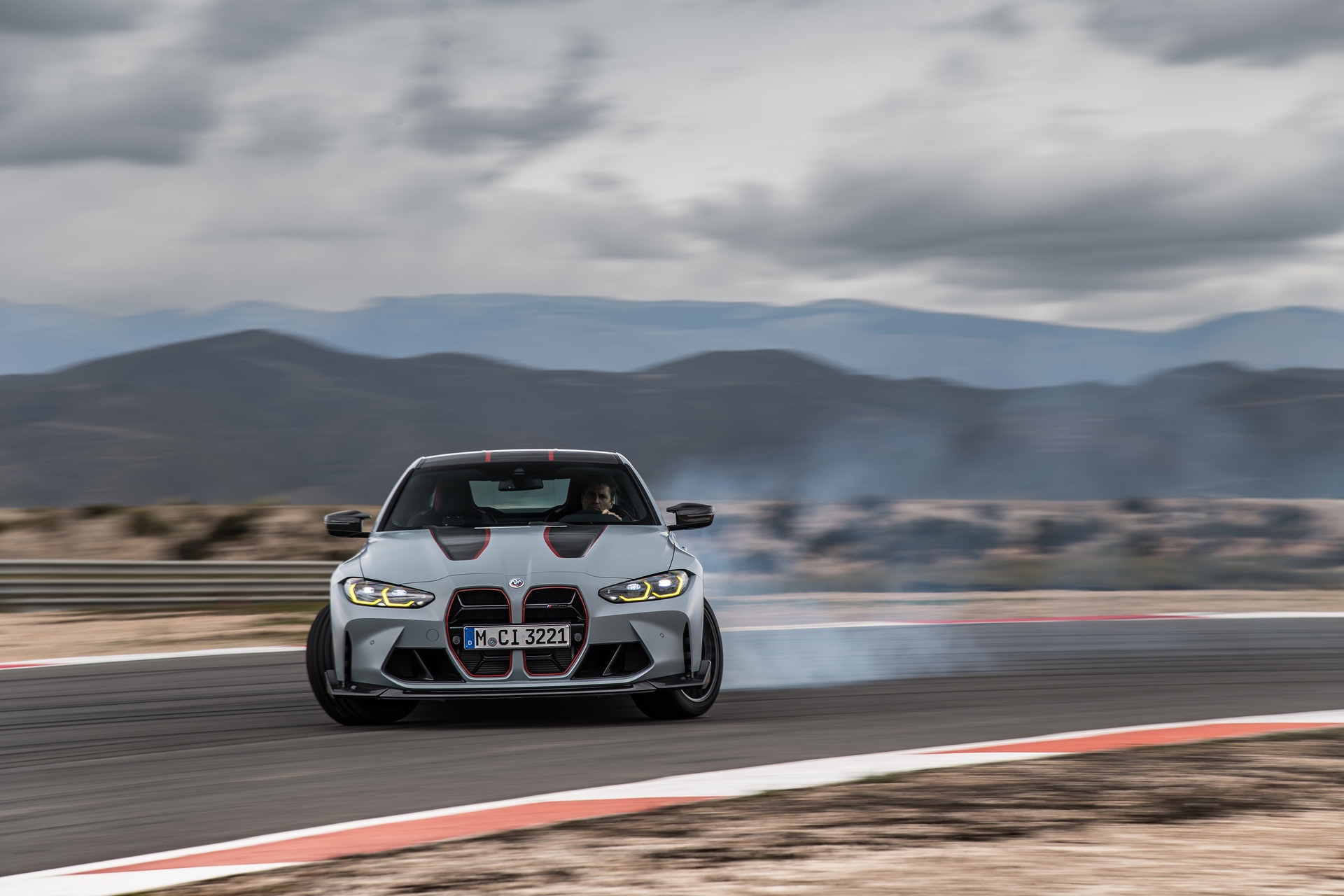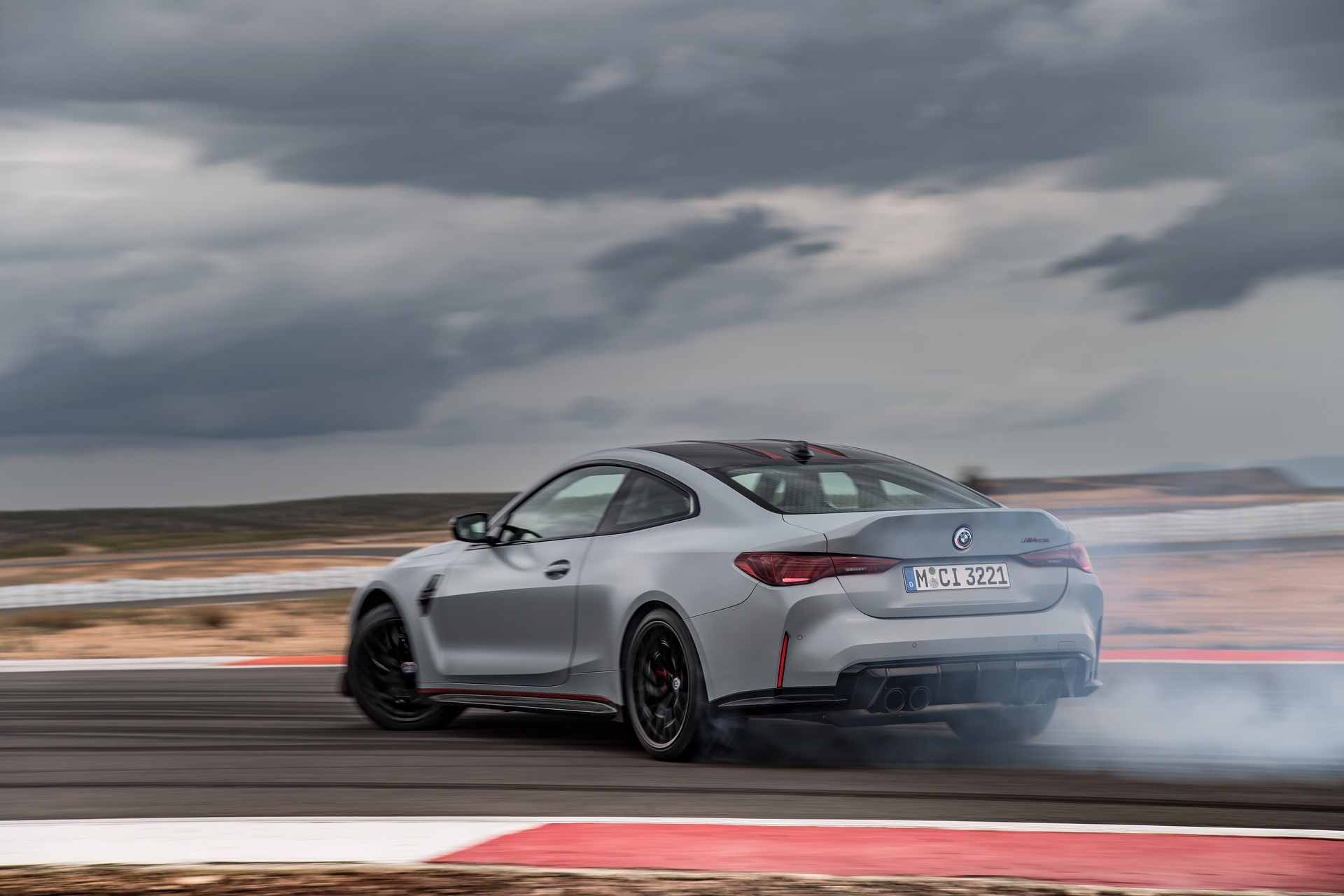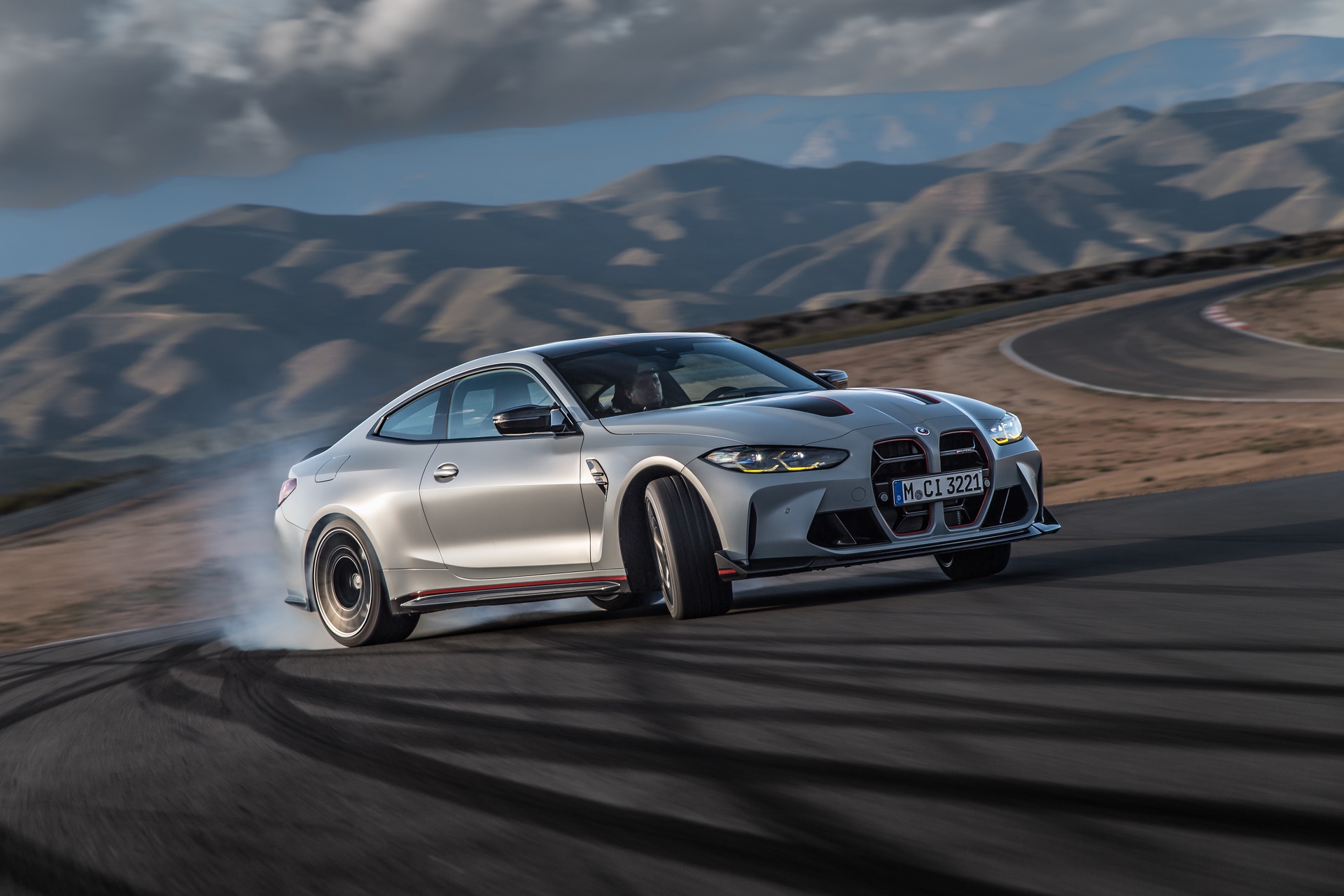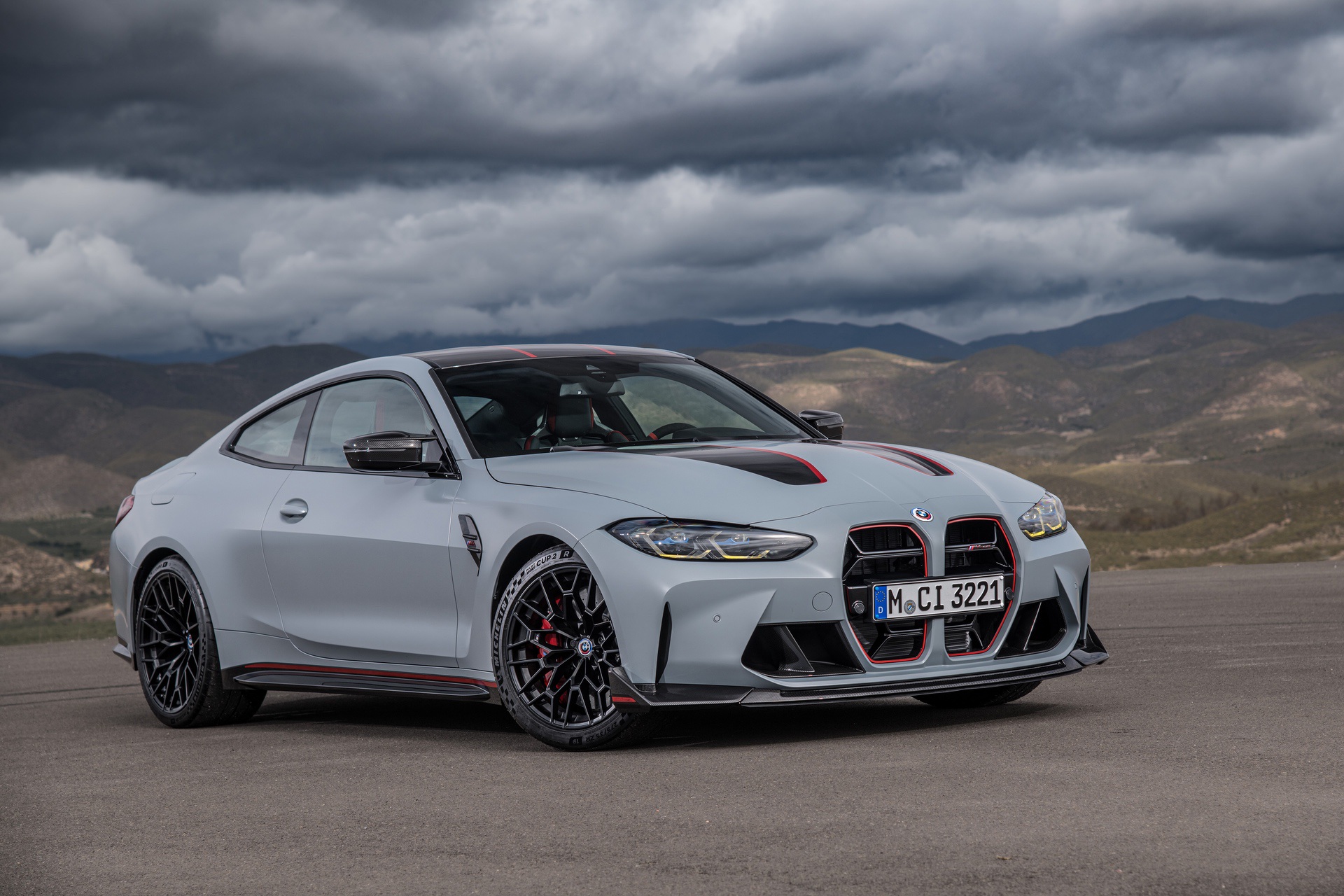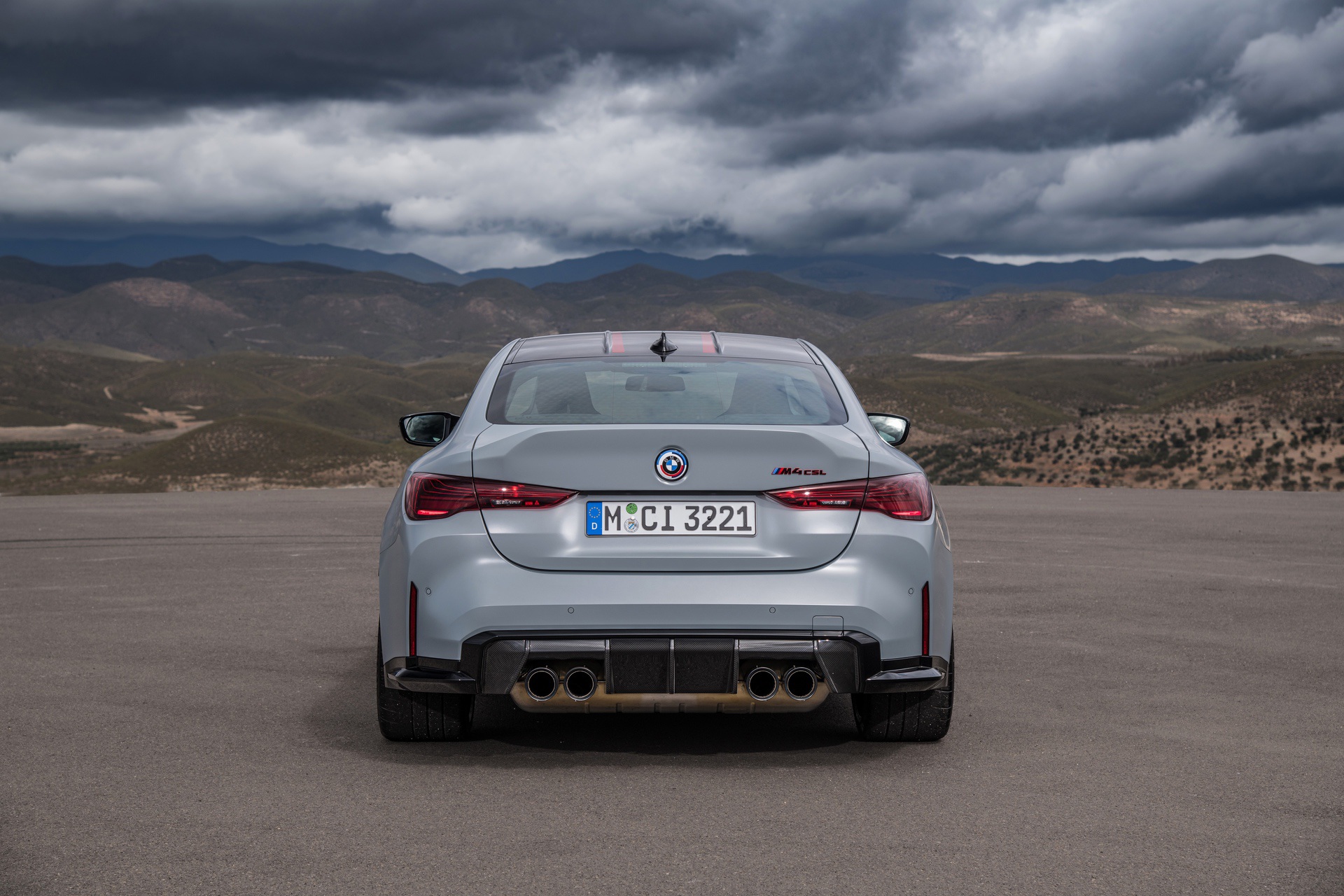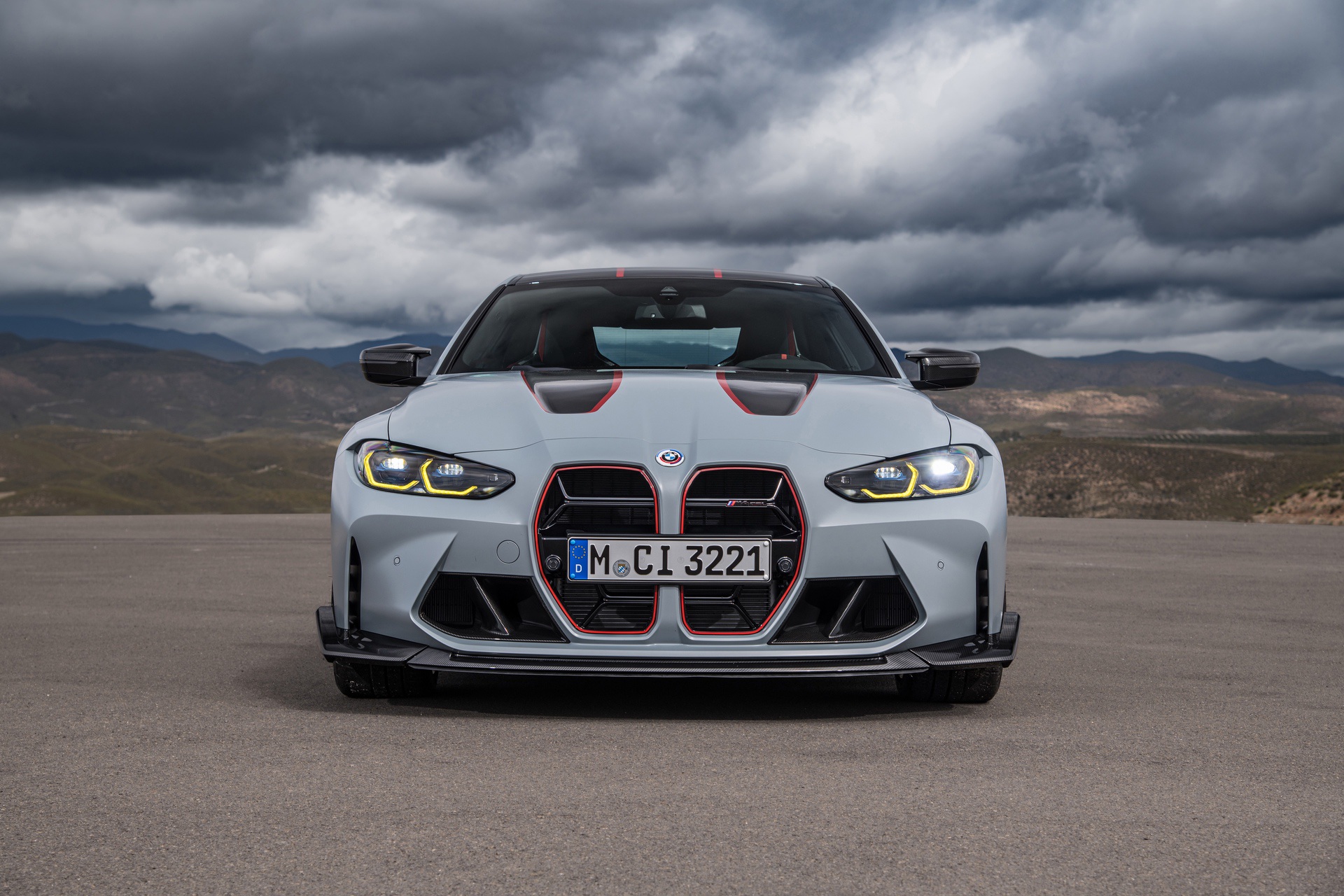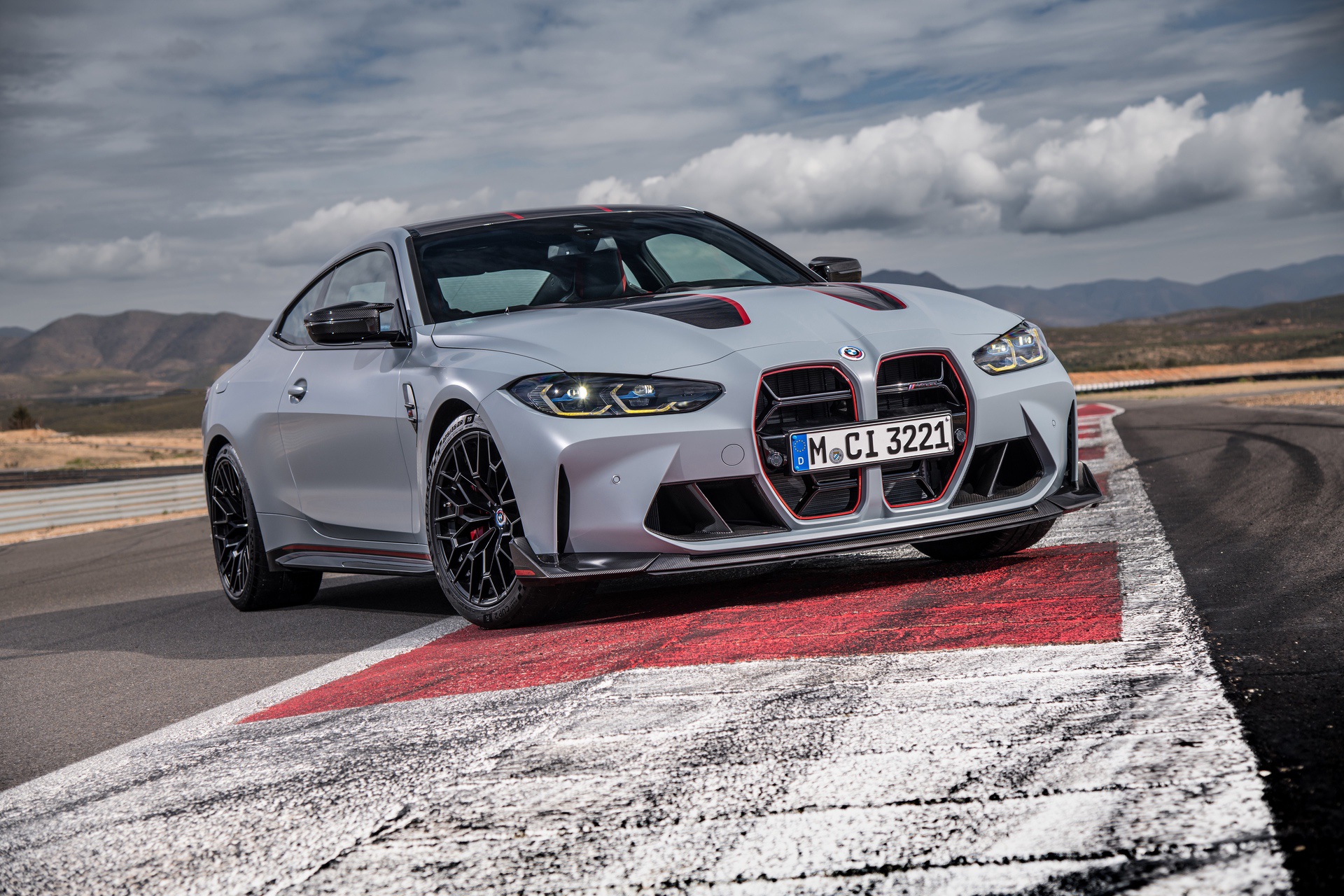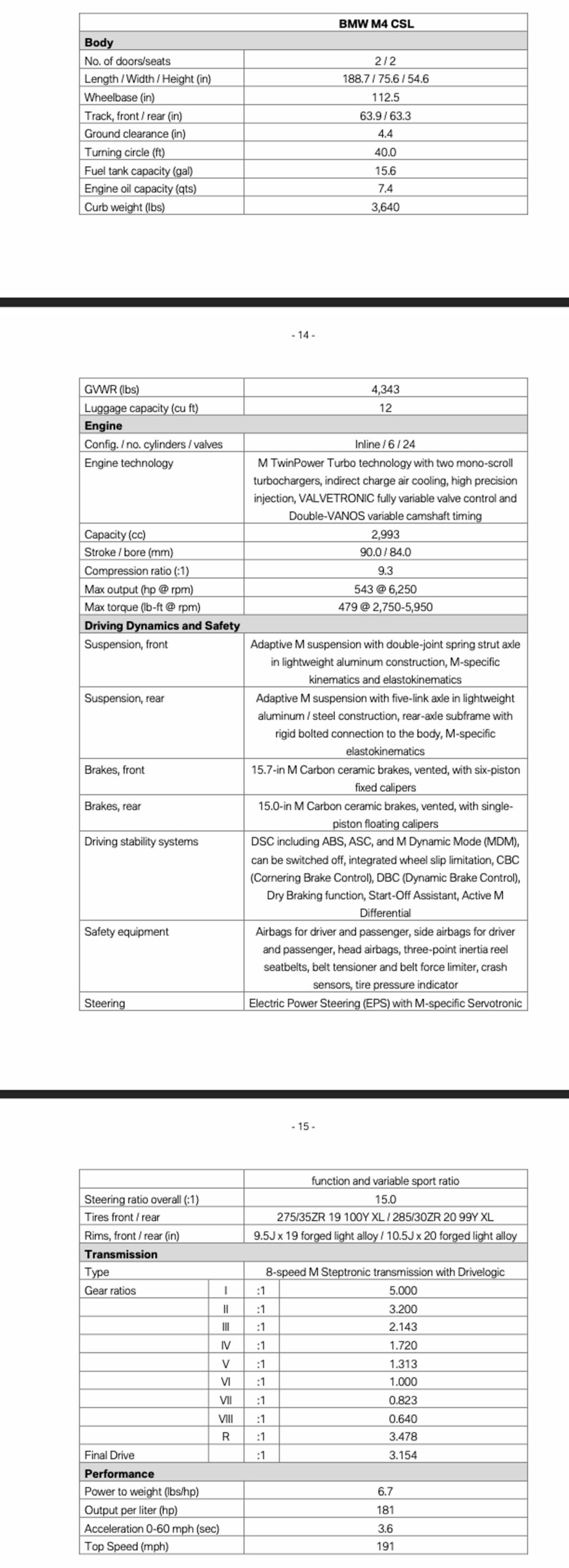BMW is celebrating the 50th anniversary of its M Division with the return of potentially the most iconic nameplate in its history–CSL. The E46 M3 CSL is widely regarded as the best-driving M car of all time and now it finally gets the spiritual successor BMW fans have been waiting decades for–the BMW M4 CSL.
What is the BMW M4 CSL?
Obviously, it’s based off of the current BMW M4 Competition. However, it’s been given a very similar treatment as its predecessor, burning fat and adding muscle. To get the M4 CSL into fighting shape, BMW M borrowed a surprising amount of tech and know-how from the M4 GT3 racecar. Not since the E30 M3 has a production BMW been so closely aligned with its racecar cousin.
And it looks like a racecar. Its already massive kidney grille now features a new insert design, which has far more negative space than before. Two large black stripes, which are trimmed in red, adorn the hood, and red the red trim continues onto the roof. A large front splitter extends from the front bumper, a large ducktail spoiler is built into the trunk (a throwback to the E46 CSL), and yellow headlights all prove that the CSL ain’t your average M4.
There will be two standard colors and two exclusive colors for the M4 CSL: Alpine White and Black Sapphire Metallic are standard, while Frozen Brooklyn Gray is optional.
Most importantly, BMW M gave the M4 a diet for CSL-duty. Lightweight carbon fiber bucket seats shaved 24 kg off the Competition’s curb weight. Another 21 kg was saved by deleting the rear seats and rear seatbelt assemblies. Extra-lightweight carbon ceramic brakes, lighter wheels, new springs, and new struts, all combined to reduce weight by another 21 kg.
BMW dropped another 15 kg by ditching much of the M4 CSL’s soundproofing and switching some of it over to a lighter-weight version. Carbon fiber exterior bits reduced weight by 11 kg, with another four kg being lost by switching to titanium exhaust silencers. Lastly, another four kg was saved by using lighter weight bits throughout the car, such as the carbon fiber hood, different kidney grilles, rear lights, floor mats, and automatic climate control.
100 Kilos Lighter, 550 Horsepower
For those of you keeping score, that’s a smooth 100 kg weight reduction, dropping the M4 CSL’s curbweight to 1,625 kg. That’s no featherweight but it’s still significantly lighter than the standard M4 Competition, while also packing more power.
Speaking power, the M4 CSL’s version of the S58 engine–a 3.0 liter twin-turbo inline-six–makes 550 PS (543 horsepower) and 479 lb-ft of torque. That’s up 47 horses from the M4 Competition but has the same torque. Though, nothing crazy was done to make the extra power. Only a simple software tune and an increase in boost pressure were needed to get the desired 550 horsepower, as the S58 is already a pretty advanced engine by itself. Just don’t expect any wild carbon fiber air intakes or asymmetrical intake ducts, like the E46 M3 CSL had.
There are some cool new features of the engine, though, such as are significantly stiffer engine mounts, with spring rates up from the M4 Competition’s 580 N/mm on the left side and 900 N/mm on the right side to 1,000 N/mm on both sides. It also gets a lighter-weight oil sump and an indirect intercooler with electric coolant pump.
Eight Speed, Rear-Wheel Drive
As expected, the M4 CSL exclusively uses an eight-speed automatic transmission and rear-wheel drive but that shouldn’t put enthusiasts off. The E46 M3 CSL was auto-only as well and it’s still held in incredibly high regard. The M4 CSL’s eight-speed auto is also lightyears ahead of the E46 CSL’s SMG gearbox. Straight line performance isn’t anything too crazy, at least according to BMW’s claimed 0-60 mph time of 3.6 seconds. While that’s still seriously fast, an M3 Competition xDrive would probably be quicker in a straight line.
However, straight line speed was never the name of the CSL’s game. Instead, CSL models are meant to be scalpels on a track and on back roads, which means sacrificing the straight-line performance of all-wheel drive for the thrill of rear-wheel drive.
Speaking of a thrilling drive, the BMW M4 CSL gets an all-new suspension setup that’s 0.3-inches lower than the stock M4 Competition. It also gets new solid rubber ball-joints, with no play, for improved handling response, more camber at the front axle’s forged swivel bearing, and auxiliary springs at both axles.
Fastest BMW on the Nürburgring
M Carbon Ceramic brakes come as-standard on the M4 CSL, which come with six-piston fixed calipers up front and single-piston floating calipers out back. They work with BMW’s integrated brake system (no one thought “IBS” was a bad name?), giving the M4 CSL several different brake modes. Those big brakes work well with BMW M’s ten-stage traction control system, which is the same as the M4 Competition in stages one through five, but becomes significantly more track focused after that. Keeping it all on the ground are a set of Michelin Pilot Sport Cup R tires, measuring 275/35 ZR19 and 285/30 ZR20 out back.
According to BMW, the M4 CSL is capable of lapping the Nürburgring 7:20.2, which is still quite a bit slower than the Porsche 911 GT3, which did it in 6:59,927.
BMW will only build 1,000 M4 CSLs, though allocation specifics have yet to be announced. Production begins in July. The German price for the BMW M4 CSL was set at 165,000 euros. In the United States, the base MSRP is $139,900 plus $995 destination.


